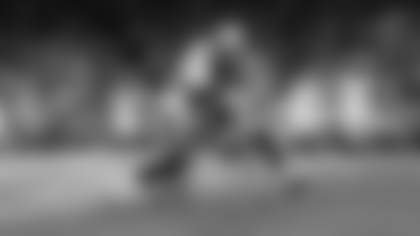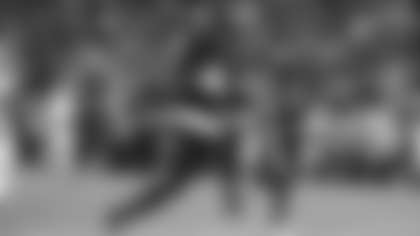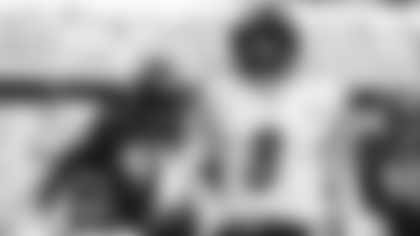It's a love story.
At its essence, that's what it is. You'll come for the football, of course. You'll come for his playing career under one of the coaching pioneers of the sport, and then for his own coaching career that had him at the helm of the franchise that would win more Super Bowls in a shorter span than any other franchise in NFL history. That's what you'd expect from a biography of Chuck Noll. But when you finish it, what sticks with you, what separates itself, is the humanity, the loyalty to family, and above all, the love for his wife.
In "Chuck Noll: His Life's Work," Michael MacCambridge does a detailed and thorough job of using 400-some pages to paint a portrait of a man who was extraordinary in all things except the art of self-promotion. MacCambridge's Noll is the man behind the coach, the son who provided for his parents, the uncle who was there in all ways for his seven nieces and nephews. And a partner to the love of his life, Marianne.
That Chuck Noll was born in Cleveland, attended Benedictine High School before matriculating to the University of Dayton where he played football with enough distinction to be drafted in the 20th round by the Cleveland Browns is common knowledge to anyone who was interested. But MacCambridge injects a unique perspective into the life of young Master Noll with the revelation that he suffered from epilepsy.
The disease ends up having a significant impact on Noll's life, and the big reveal is that Noll first attended Notre Dame after graduating from Benedictine only to have a practice field seizure end his brief but promising stint on Coach Frank Leahy's Fighting Irish football team. That's how Noll ended up at Dayton, and from there Dayton led to the Browns, which brought him back to Cleveland, where he eventually would meet Marianne Hanes, who is introduced in the book by MacCambridge this way in Chapter 6:
"By that point in her life, Marianne Hanes had been following her own muse for more than a decade. She had blanched, as far back as the eighth grade, in Portsmouth, Ohio, at the different set of standards she was expected to observe because she was a female. She'd been sent to the principal's office, more than once, and told that to be argumentative or opinionated was acceptable for boys but not girls."
Then later in the same chapter: "Like her three roommates, Marianne Hanes found her way to the single life in Cleveland through a circuitous path, requiring smarts, persistence, and a kind of self-reliance that was not commonly associated with single women in the 1950s. In time, she would meet Chuck Noll. And she would be unlike any of the other women he had ever known."
Despite a disastrous first meeting that nearly sabotaged the relationship before it had a chance to begin, Chuck Noll and Marianne Hanes went on their first proper date. "From that opening hiccup, they soon became inseparable," writes MacCambridge. "He was drawn to her native intelligence, alluring manner, and comfort around men. She was drawn to his obvious intellect, strong demeanor, and the formidable moral rectitude that set him apart from most men, not to mention most football players … Maybe it was a coincidence and maybe it wasn't. But from that day on, Chuck Noll never suffered another epileptic seizure."
Rest assured, there's also plenty for die-hard football fans in "Chuck Noll: His Life's Work."
The 1950 season was the inaugural one in the NFL for the Cleveland Browns, and during that decade the team won three NFL Championships and finished second four other times. Noll, drafted in 1953, played on Browns teams that won it back-to-back and lost in the Championship Game twice.
The narrative follows Noll into the coaching profession after a brief flirtation with law school, and it chronicles a career that began as an assistant on Sid Gilman's staff in the newly-formed AFL and then to the time spent as a defensive backfield coach and then the defensive coordinator with Don Shula and the Baltimore Colts. It follows the interview process with Dan Rooney that took place almost immediately after the New York Jets shocked the sports world by upsetting the Colts in Super Bowl III. And then Noll's 23 seasons with the Steelers as their head coach/savior.
Even though the Steelers of the 1970s have been written about and discussed for a generation, MacCambridge unearths enough nuggets to keep the narrative fresh for even the most dedicated Steelers scholar, such as a re-telling of the Chuck Noll-Terry Bradshaw relationship but from the perspective of Bradshaw's backup Cliff Stoudt. Where MacCambridge really fills in a lot of blanks comes in the re-telling of the 1980s, the post-Team of the Decade doldrums that Noll, who would become an accomplished pilot and sailor, never could steer the Steelers out of.
There were pockets of success during the 1980s, but never a return to the sustained excellence, to the periods of dominance that characterized the Steelers of the 1970s, and MacCambridge takes the reader through all of it, right up to Thursday, Dec. 26, 1991, when Noll walked into Dan Rooney's office at Three Rivers Stadium. "I think it's time," he said, "to get on with my life's work."
Writes MacCambridge, "Rooney had been preparing to discuss staff changes with Chuck. But now, faced with the news, he could only express sorrow and gratitude. There was little reminiscing, only a quick discussion of the logistics, mutual thank yous, and a handshake … He wasn't simply retiring. He was ready to get away from it all. Thirty-five years into his marriage, he was finally going to enjoy an extended spell with his wife, the timing of which would not be defined by the rhythms of the football season. Marianne, calm and reserved through the final weeks of the season, had been beaming by Christmas. The hard part was over. Or so it seemed."
Thus, the reader is taken into Chuck Noll's retirement, a time of his life that previously had been completely uncharted.
'"We lived on the boat for months and I loved it,' said Marianne. 'I would have stayed there forever.' 'That was the big joke," said son Chris. 'When I was in college, they could never find me. And when they retired, I could never find them. Turn the tables."'
A year into his retirement, the New York Giants had fired Ray Handley, who had succeeded Bill Parcells, and GM George Young, who had worked with Noll in Baltimore, was running the search for a replacement. With the Mara family said to be looking for a veteran coach, Jack Henry, an assistant for Noll in 1990-91, was about to take a college job but first wanted to check in to see if his old boss might be thinking about a return to the NFL. "No, it's over for me," Noll told Henry. "I'm done."
The book's final chapter deals with the diagnosis of Alzheimer's and the aftermath, and MacCambridge paints a poignant scene of Marianne telling Chuck what the doctor told her. "She took his hands in hers and delivered the news: 'The doctor says you have Alzheimer's disease' … Then he squeezed her hands tightly and looked back into Marianne's eyes, with the steady, determined gaze she'd seen so many times before. He had just one thing he had to tell her. 'I will … never … forget who you are,' he said."
The Alzheimer's diagnosis never became public, but family, and some friends and former players, came to recognize that something was amiss. "The pattern was set," wrote MacCambridge. "Chuck and Marianne stuck mostly with close friends and family. When others would call, she would talk about Chuck's back, but she would rarely bring him to the phone to talk to even his oldest friends and colleagues."
On Friday, June 13, 2014 – after an enjoyable dinner at home with Marianne – Chuck Noll went to bed. Marianne helped him into bed, told him she loved him, and when she came in to join him after cleaning up the kitchen, he had stopped breathing.
MacCambridge chronicles the funeral and writes about its difficult aftermath:
"For the first time in 57 years, there was no one to take care of, no chest to rest her head on, no breathing to align with hers. Through that lonesome night, she was consoled by one thought: Somehow, through the faded memories of that final decade, Chuck had answered her devotion with one last brave and honest deed of his own. He had kept his promise. He never forgot."
Told you. It's a love story.
This Sunday, join the Western Pennsylvania Sports Museum and University of Pittsburgh Press to commemorate the life and legacy Noll. The event will include a star-studded lineup of Pittsburgh Steelers greats, including Joe Greene, Rocky Bleier, and Tunch Ilkin and Michael MacCambridge. Click here to learn more.














